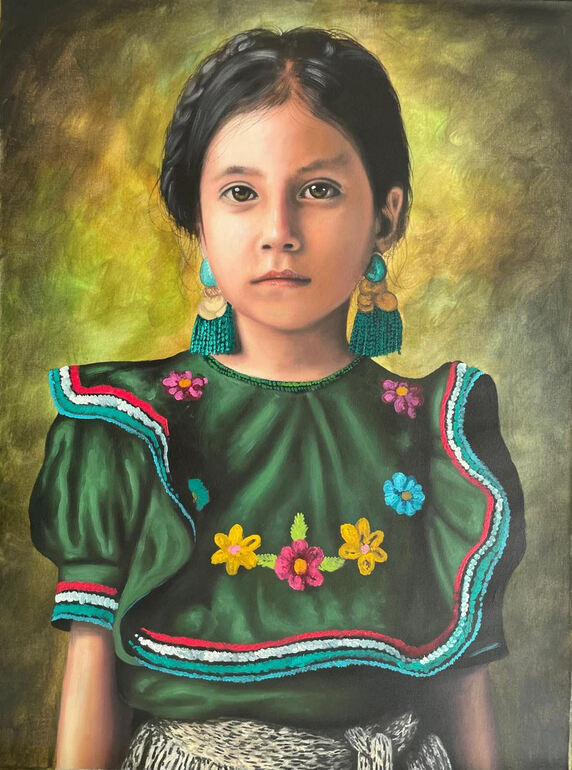
Girl with earrings
*
Español
October 20, 2024
by Patricia Argüello Melgar
"You take care of playing the flute and singing, painting, sculpting; warm our house and warm your grandmother's heart."
- Popol Vuh. The sacred book of the Mayas.
The Mayas developed a marvelous civilization in the south of Mexico and in the territory of Guatemala; art was their fundamental expression through writing (hieroglyphs), architecture, painting and sculpture. Today, we are still amazed by the beauty and harmony that they captured in each of their pieces, murals and ceremonial sites such as Chichen Itza, Palenque, Tulum, Calakmul, Tikal, etc. Undoubtedly, it was a civilization of artists. Their art has transcended time. It is alive; revealing to us that art is the soul of the people.
Currently, there are communities descending from the Maya that have admirably resisted colonization and the onslaught of a capitalist economic model that excludes them, and sometimes even persecutes them trying to annihilate them. But there they are, here they are, among us. I have visited some of these communities in Chiapas, the Yucatan Peninsula and Guatemala and it never ceases to amaze me that I have found the same answer to my central question: Are you Maya? Yes, we are Maya.

Mayan girl
*
In the words of master Yac Noj: "The Mayan cosmovision is a way of seeing the universe, life, which has allowed our people to continue to live." The ancestral teachings of the Maya have resisted the passing of time, they consider themselves as part of Nature, as active elements of harmony and balance of Mother Earth as a whole. Yac Noj also shares with us that "considering the Earth as a Mother changes all relationships with Her."
On the southern margins of Lake Atitlán in Guatemala is a Mayan ethnic group, the Zutujiles. There we find families of artists, groups of artists, who organize themselves to express their art together and transmit it to children and young people. Artist Henry Méndez Chavajay tells us how this approach or discovery of art arises from childhood: "In my community, in our homes we sit around the fire; the elders. Our fathers and mothers stoke the fire well and the food is cooked over the embers and then in a while. The children take chalk to scratch and draw on the walls. And so, laughing, we discover the world and slowly enter the paths of art, of creativity without intending to, like the water that flows in the river. Just like that.
Henry Méndez is originally from San Pedro la Laguna, Sololá, Guatemala. For 25 years he has been dedicated to the plastic arts; highlighting in his work two aspects: environmental impact and portraits of children in his community. Through the years he has also been inspired by outstanding muralists from Mexico and Central America, which is why he has also ventured into muralism. His paintings have been exhibited in cities in Canada, the United States, Mexico and Central America.
Strength of color and movement stand out in the work of Henry Méndez. He manages to express in the faces of the girls he has painted the beauty, strength and hope that each of these Mayan and mestizo girls keep inside; attributes that make them their own in their daily lives in a difficult life environment, an environment which in most cases robs them of their childhood, since they have to support themselves and even provide economic resources to their families.
In Antigua Guatemala you can find these girls walking the streets of this beautiful colonial city selling the handicrafts that they and their families make with local materials such as natural fibers, clay and ceramics. They walk much of the day with great dignity and poise showing and selling their pieces. Thus they also discover the world, making incursions to solve challenges and affronts, to keep walking on a path of life often lonely.
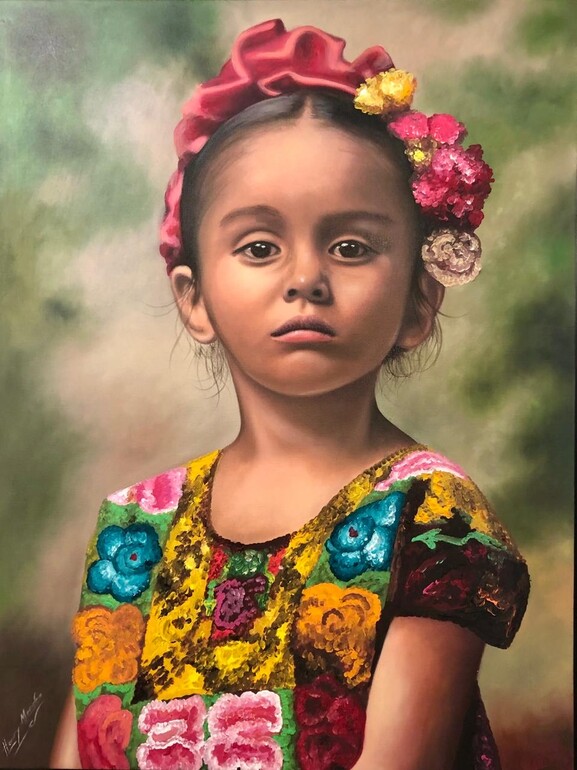
Mexican girl
*
The faces of the girls that Henry Méndez captures in his paintings manage to express in their eyes the goodness and hope that guides them. Their resilience, without them knowing the concept or the meaning of that word, also inspires them on a daily basis. They have difficult lives. Some of them live in their homes with the drama of violence and alcoholism of their parents. These, together with poverty, they have to overcome, drawing on their inner strength and creativity to also support and care for younger siblings.
Many of these girls see their work as vendors as a learning opportunity. They learn English and French in the streets mainly through their daily contact with tourists visiting Guatemala. They are great conversationalists. Their capacity for astonishment is contagious, they never cease to be amazed by everything they see and they tell you about it with laughter, revealing their innocence and their truth.
For Henry Méndez, the daily contact with these children in his community allowed him to discover, without himself ceasing to be amazed, that art heals. Since 2009, together with his brother José Antonio Méndez, who is also an outstanding artist, he created a free educational project that immerses the children of his community in art. The program "Help me paint my future" has been running for 15 years. Every Saturday they give drawing and painting classes in mixed techniques to children on the shores of Lake Atitlán. An average of 30 children arrive every Saturday. Approximately 2000 children have attended and been taught plastic arts. The brothers Méndez also share with us that they receive voluntary contributions for the purchase of materials such as canvases, paintbrushes, oil paints, etc. Tourists, many of them Canadians and Americans, walk along the shore of the lake, approach and watch the development of the class or workshop. Some of them get involved and support financially. Sometimes they come as volunteers and stay for a few weeks supporting the classes with the children or doing other artistic and social activities or even supporting the exhibitions of the children's works in festivals or cultural events in different cities of Guatemala.
This is how the brothers and artists José Antonio and Henry Méndez have been able to continue this learning activity, how children have been able to transmute their emotions and difficult experiences through their paintings, experiences that they have gone through since they were very young. It is liberating for many children to be able to enter art and learn an alternative way to express their creativity and also their suffering, hardships and often orphanhood. They advance on a path of self-discovery that allows them to reach alternative ways of development and strengthen their self-confidence to reach rewarding scenarios. Some of the children today excel in different expressions of art and music, and have been able to gain access to formal education and better paying jobs.
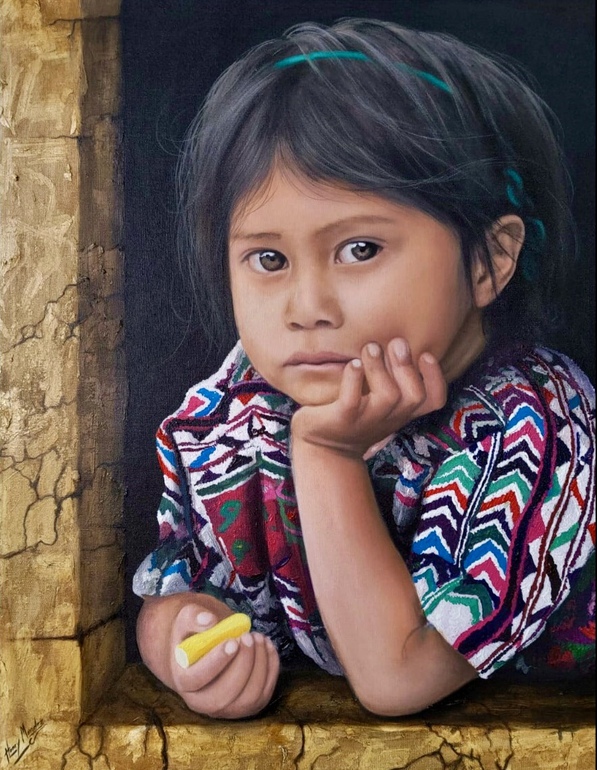
Girl observing
*
Henry Méndez shares with us: "I like my culture. I paint my roots. I am Maya Zutujil. I live near a village surrounded by three volcanoes and sometimes we still see the quetzals in flight." We can also appreciate in the pictorial work of Henry Méndez the symbol of his country, the quetzal, sacred bird of the Mayas.
***
Among faces and quetzales, Henry Méndez
exhibition through December 10
Mayab in Lavinia's Art Space
Calz. de la Estación 151
***
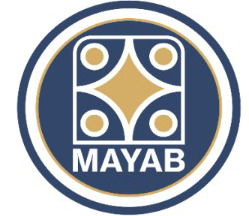 Furniture Art Design
Furniture Art Design
Mayab is a space of art and design of furniture in precious woods. Our pieces are crafted with precision and care to create a beautiful and functional work of art. Mayab offers a selection of paintings and sculptures by renowned Mexican and foreign artists. It also promotes the talent of the artisans of San Miguel de Allende and other Mexican cultures such as the Mayan, Huichol, Otomi, Tarascan, etc.
Mayab means "holy land of the Mayas where artists can enter and express themselves."
Lavinia's Art Space, Calzada de la Estación 151
Instagram
**************
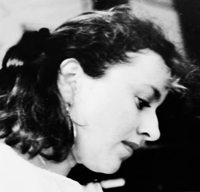
Patricia Argüello Melgar is from Chiapas. She grew up playing among the coffee bushes and running barefoot over the coffee cherries that sunned on the patios of the houses in her town. She enjoys the art of learning and teaching, which is why she dedicated many years to academia in the fields of economics, public administration and education. She is an admirer of the Mayan culture, which is why she has taken up the concept of the seed and star to enter the market through Mayab.
mayab.sma@gmail.com
**************
*****
Please contribute to Lokkal,
SMA's online collective:
 ***
***
Discover Lokkal:
Watch the two-minute video below.
Then, just below that, scroll down SMA's Community Wall.
Mission

Visit SMA's Social Network
Contact / Contactar

